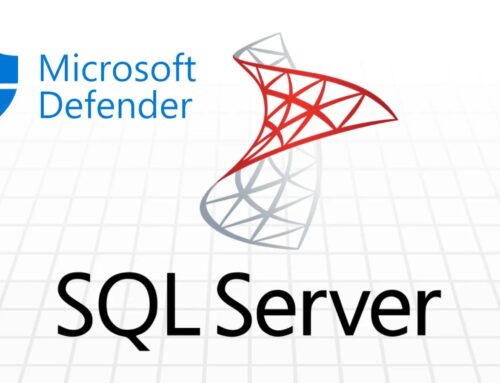
Hackers Weaponized Linux Webcams as Attack Tools to Inject Keystrokes and Launch Attacks
Linux Webcams Weaponized: A New Frontier for BadUSB Attacks
The landscape of cybersecurity is perpetually shifting, with adversaries constantly innovating to find new vectors for compromise. A recent and particularly insidious discovery, presented at DEF CON 2025, highlights a critical vulnerability that transforms common Linux-powered webcams into potent BadUSB attack tools. This breakthrough research reveals the first known instance where attackers can remotely weaponize USB devices already connected to target systems, marking a significant escalation in potential threat capabilities. For IT professionals, security analysts, and developers, understanding this novel attack vector is paramount to fortifying defenses against increasingly sophisticated threats.
The Anatomy of a Weaponized Webcam Attack
Traditionally, BadUSB attacks have required physical access to inject malicious USB devices. This new research shatters that paradigm. By exploiting a yet-to-be-disclosed vulnerability (for the purpose of this post, let’s designate a hypothetical identifier like CVE-2025-XXXXX, pending official assignment), hackers can remotely manipulate Linux-based webcams. Once weaponized, these devices masquerade as legitimate Human Interface Devices (HIDs), such as keyboards. This enables them to inject malicious keystrokes directly into the compromised system without alarming security software or human users.
The implications are far-reaching. Imagine a seemingly innocuous webcam, used for video conferencing or surveillance, suddenly becoming an attacker’s gateway. It can execute commands, download malware, or exfiltrate data, all under the guise of legitimate user input. This bypasses many traditional endpoint detection and response (EDR) solutions that rely on identifying anomalous process behavior or network activity, as the initial compromise appears to originate from a trusted hardware component.
Beyond Keystrokes: The Broader Threat Landscape
While keystroke injection is a severe capability, the potential extends beyond simple command execution. A weaponized webcam could be programmed to:
- Install Ransomware: Initiate script downloads and execute ransomware payloads.
- Deploy Backdoors: Establish persistent remote access by installing clandestine backdoors.
- Exfiltrate Sensitive Data: Automate data collection and transmission through file system navigation and data copying commands.
- Elevate Privileges: Exploit local vulnerabilities to gain administrator or root access.
- Manipulate System Settings: Disable security features, firewall rules, or logging mechanisms.
The stealthy nature of this attack, leveraging an already-connected and seemingly benign peripheral, makes detection extremely challenging without specific behavioral analysis or hardware integrity checks.
Remediation Actions and Mitigations
Addressing this advanced threat requires a multi-layered approach focusing on hardware security, system hardening, and continuous monitoring. While a definitive patch for CVE-2025-XXXXX will be crucial, organizations can implement several proactive measures:
- Regular Firmware Updates: Keep all peripheral device firmware, especially for Linux-based webcams and other USB devices, updated to the latest versions. Manufacturers often release patches for embedded vulnerabilities.
- Principle of Least Privilege for Peripherals: Implement strict policies for USB device access. Consider whitelisting only essential USB devices and blocking the execution of unsigned drivers or firmware updates.
- Application Whitelisting: Employ application whitelisting solutions that prevent the execution of unauthorized executables and scripts, even if initiated via keystroke injection.
- Endpoint Detection and Response (EDR) Enhancement: Focus EDR solutions on behavioral analysis of HID input, looking for anomalies like unusually rapid keystroke sequences, unexpected command executions originating from peripheral devices, or uncharacteristic file access patterns.
- Physical Security: Limit physical access to devices to prevent tampered or cloned peripherals from being introduced.
- Network Segmentation: Isolate critical systems on separate network segments to limit lateral movement if a peripheral on a less sensitive system is compromised.
- USB Device Control Software: Utilize software that provides granular control over USB port functionality, allowing administrators to disable HID emulation or restrict device types.
Tools for Detection and Mitigation
While no single tool can offer a complete panacea, a combination of solutions can enhance an organization’s ability to detect and respond to such sophisticated threats.
| Tool Name | Purpose | Link |
|---|---|---|
| Osquery | Endpoint visibility, query USB device events and system configuration changes. | https://osquery.io/ |
| USBGuard | Linux USB device authorization and access control framework. | https://usbguard.github.io/ |
| Sysmon for Linux | System activity monitoring, providing detailed logs for process creation, network connections, and file system changes related to USB devices. | https://learn.microsoft.com/en-us/sysinternals/downloads/sysmon |
| Cimmaron (Open-Source Honeypot) | Simulate vulnerable systems to capture and analyze BadUSB attack attempts in a controlled environment. | https://github.com/secureworks/cimmaron |
Conclusion
The weaponization of Linux webcams as BadUSB attack tools represents a significant escalation in the cyber threat landscape. This remote exploitation capability bypasses traditional physical access requirements for BadUSB attacks, making it a critical concern for all organizations. The ability of an everyday peripheral to inject malicious keystrokes and launch attacks without detection necessitates a re-evaluation of endpoint security strategies. Proactive measures, including stringent firmware management, robust access controls for USB devices, and advanced behavioral monitoring, are essential to mitigate the risks posed by this evolving threat vector. Vigilance and continuous adaptation are the hallmarks of effective cybersecurity in an era where even the most benign devices can become weapons.





